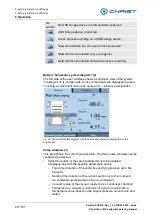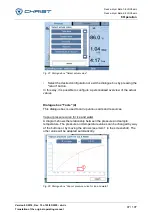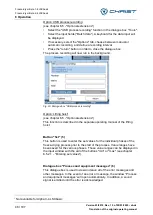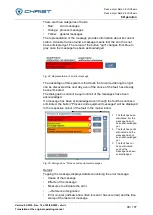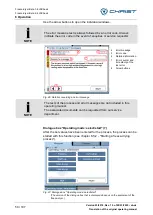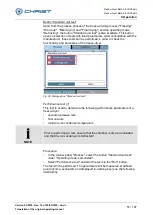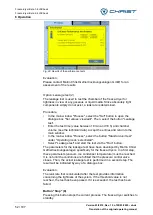
Freeze-dryer Beta 1-8 LSCbasic
Freeze-dryer Beta 2-8 LSCbasic
5 Set-up and connection
Version 03/2018, Rev. 1.5 of 09/03/2020
• sb-dc
37 / 107
Translation of the original operating manual
→
5.2
Power supply
→
5.2.1
Type of connection
DANGER
Danger of life caused by electric shock
There is a risk of electric shock when touching current-carrying
components.
This may lead to ventricular fibrillation, cardiac arrest, or respiratory
paralysis.
• Only qualified electritians are authorised to perform work on the
electrical system of the freeze-dryer!
• The electrical equipment of the freeze-dryer must be checked at
regular intervals by a qualified electrician!
• Defects such as loose connections or burnt cables must be eliminated
immediately.
DANGER
The operating voltage on the name plate must correspond to the local
supply voltage!
Christ freeze-dryers are units of protection class I. Freeze-dryers of this
type have a three-wire power cord with an IEC C13 connector (see chapter
10 - "Technical data").
An equipotential bonding screw is located on the back (see chapter 2.1.1 -
"Functional and operating elements"). This equipotential bonding screw can
be used to perform an earth conductor check.
→
5.2.2
Customer-provided fuses
Typically, the freeze-dryer must be protected with 16 A fuses that are to be
provided by the customer.
→
5.3
Aeration valve
The aeration valve is located on top of the left side of the unit (see chapter
2.1.1 - "Functional and operating elements").
After the end of a freeze-drying process, the unit will be aerated via the
aeration valve.
NOTE
The ice condenser chamber can be flooded with nitrogen via the hose
nozzle of the aeration valve.
























